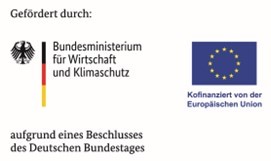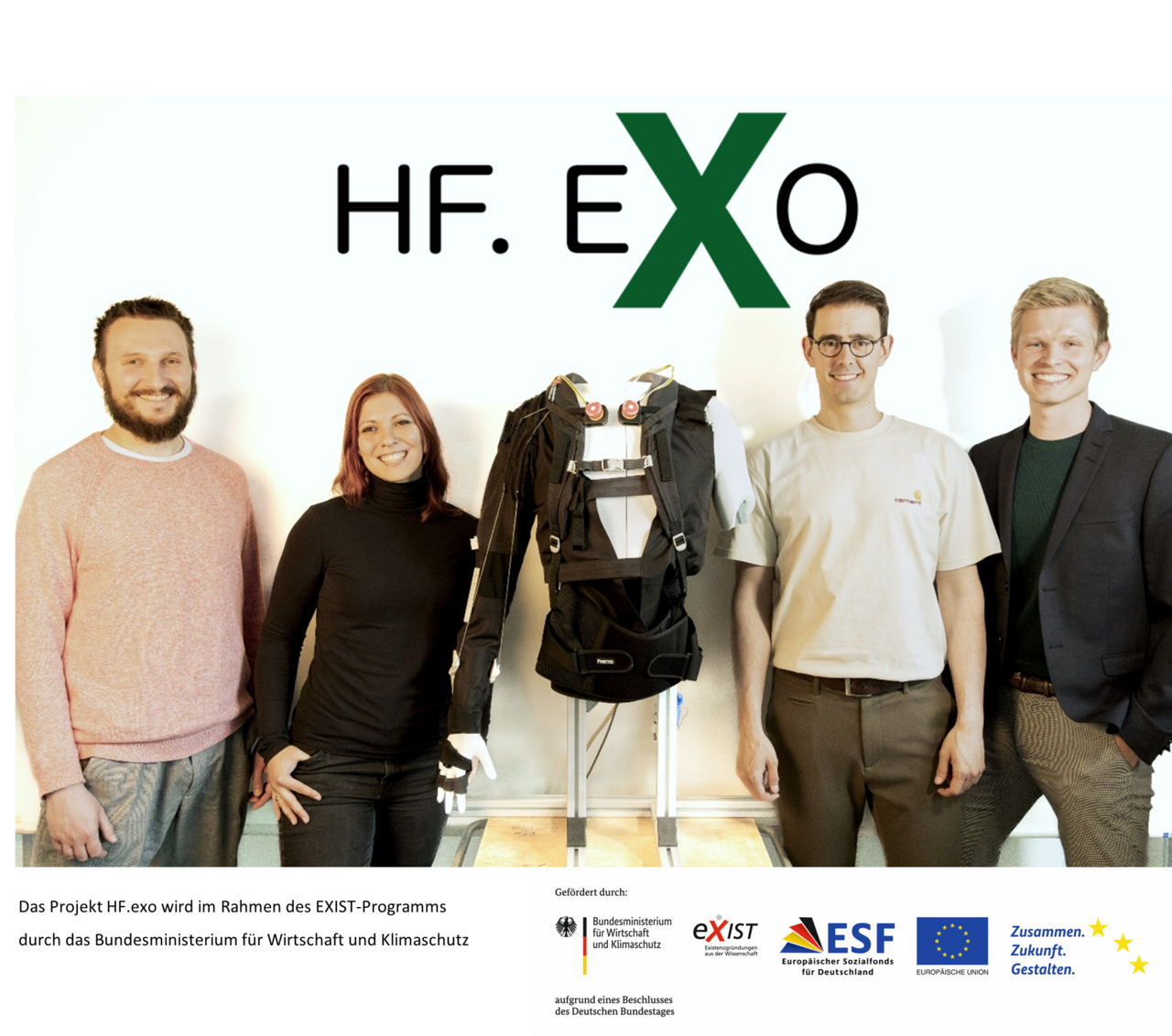


Projekt type: EXIST-Forschungstransfer
Field of research: Exoskelette
Contact persons: Christina Harbauer, Martin Fleischer, Noah Gerullis, Peter Schaefer
Project period: 02/2024 – 08/2025
Website: https://www.linkedin.com/company/hf-exo
Project overview/brief description:
Since February 2024, the founding team has been working on the HF.exo project at the Chair of Ergonomics as part of an EXIST research transfer (funded by the BMWK on the basis of a decision of the German Bundestag and by the European Union - specifically by the European Social Fund Plus (ESF Plus)). The goal is to develop soft, active exoskeletons to support people in physically demanding jobs until they are ready for the field and to prepare a subsequent spin-off.
Motivation and Goals:
Physically demanding activities, especially lifting and carrying heavy loads, lead to increased strain and fatigue. In the short term, this leads to work errors, physical complaints, reduced productivity and possibly accidents. In the long term, excessive strain and poor posture lead to musculoskeletal disorders. Representatives from the manufacturing and logistics sectors report sickness rates of up to 35% and resulting annual costs of up to €300 million. In addition, there is an increased scrap rate due to fatigue-related work errors. Health insurers confirm this assessment. According to the health insurance companies, 13.7% of the days of incapacity to work across all occupational groups are due to musculoskeletal disorders, making them the third most common reason for absence. In the warehouse management occupational group, the proportion is 30%, according to the health insurance companies.
As part of previous research projects at the Chair of Ergonomics, more than 100 workplaces in logistics and production have been analyzed since 2013. A need for support solutions for lifting and carrying activities was identified, especially for elbow flexion support. When analyzing existing support solutions, ease of use and the least possible restriction of the user during secondary activities proved to be particularly important.
The design of the exoskeleton was based on a biomechanical analysis of elbow flexion during lifting and carrying. The concept was developed through several iterations and prototypes were built to provide proof of principle in a laboratory environment. Laboratory tests and interviews in the relevant application context showed a high potential for the use of the exoskeleton in production and logistics applications, but also in the long term in the craft sector.
The goal of the project is to further develop the exoskeleton up to field readiness and to provide a proof of concept through field studies at workplaces of industrial partners from the addressed sectors. Special attention will be paid to the recognition of lifting intentions, ease of use and an ergonomic design that restricts the user as little as possible. At the same time, a business model will be developed that allows the project to be spun off after the project period.

